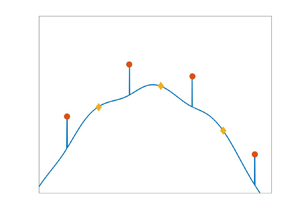Article contents
Onset of absolutely unstable behaviour in the Stokes layer: a Floquet approach to the Briggs method
Published online by Cambridge University Press: 06 October 2021
Abstract

For steady flows, the Briggs (Electron-Stream Interaction with Plasmas. MIT Press, 1964) method is a well-established approach for classifying disturbances as either convectively or absolutely unstable. Here, the framework of the Briggs method is adapted to temporally periodic flows, with Floquet theory utilised to account for the time periodicity of the Stokes layer. As a consequence of the antiperiodicity of the flow, symmetry constraints are established that are used to describe the pointwise evolution of the disturbance, with the behaviour governed by harmonic and subharmonics modes. On coupling the symmetry constraints with a cusp-map analysis, multiple harmonic and subharmonic cusps are found for each Reynolds number of the flow. Therefore, linear disturbances experience subharmonic growth about fixed spatial locations. Moreover, the growth rate associated with the pointwise development of the disturbance matches the growth rate of the disturbance maximum. Thus, the onset of the Floquet instability (Blennerhassett & Bassom, J. Fluid Mech., vol. 464, 2002, pp. 393–410) coincides with the onset of absolutely unstable behaviour. Stability characteristics are consistent with the spatio-temporal disturbance development of the family-tree structure that has hitherto only been observed numerically via simulations of the linearised Navier–Stokes equations (Thomas et al., J. Fluid Mech., vol. 752, 2014, pp. 543–571; Ramage et al., Phys. Rev. Fluids, vol. 5, 2020, 103901).
- Type
- JFM Papers
- Information
- Copyright
- © The Author(s), 2021. Published by Cambridge University Press
References
REFERENCES
- 1
- Cited by



